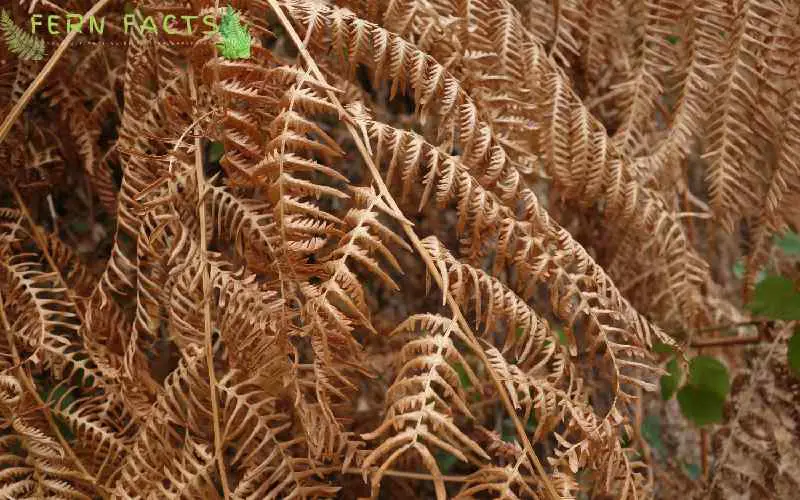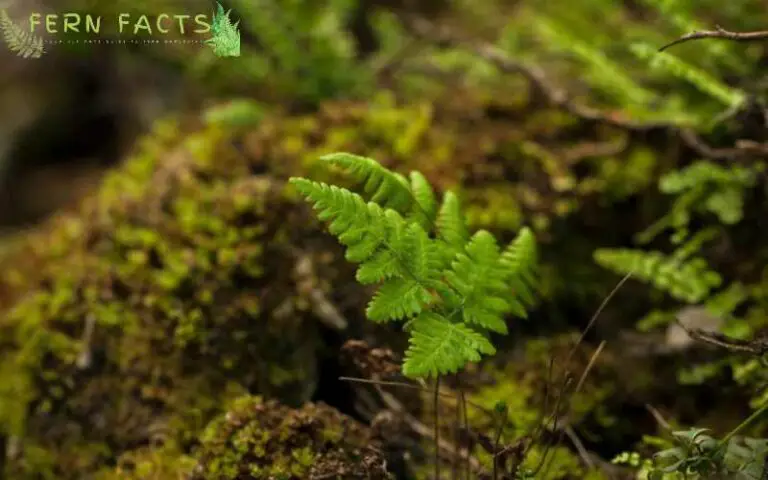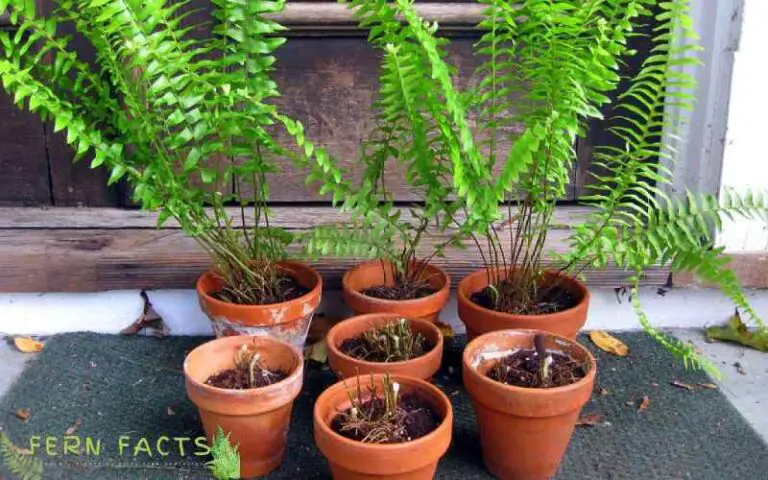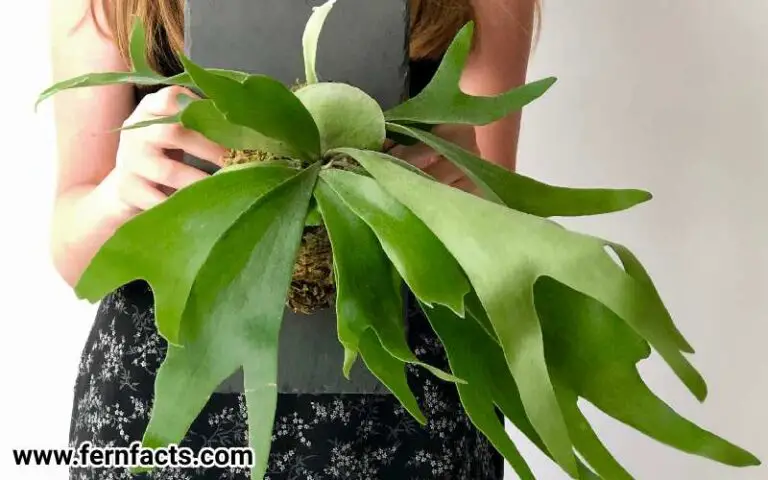Is My Fern Dead? 7 Critical Signs to Look for
Fern is a green flowerless plant that does not have any flowers on it. These ferns are the greatest indoor and outdoor plants for plant lovers or anthophile people.
However, apart from good care, these fern plants sometimes might wilt, turn down, or have dead fronds. So does that mean your fern plant is dying?
Well, there could be some possible reasons behind your plants being dead. So, in this article, I am going to give 7 critical oversight points on whether your plants are dead or not so that you can understand the sign.
So let’s give a hand to know the signs of your dead fern plants.
7 Signs to Check if Your Fern is Dead
In spite of your best efforts and trying, your fern gets wilted, sick, or has dead fronds or turn downs.
So it’s very difficult to understand whether you have lost your plants permanently or you still have a chance to save your plants. So let’s explore some reasons or signs of dead fern plants.

1. Yellowing or Browning Fronds
Yellow leaves or browning leaves could be one of the signs or symptoms that your plants might be dying.
If you see that most of your plants have yellow fronds or brownish fronds, then there is something wrong with your fern plant maintenance that you need to change.
However, it depends on the species variation, some plants die in and grow back which is a normal thing similar to deciduous plants. It’s the natural circle of these plants.
So, you need to check your fern species and take steps. Still, indoor plants might get less foliage in the winter, spring, or other times throughout the year.
But, the outdoor fern plants might get brownish fronds or yellowish fronds in the early stages of fall. The possible reasons for your plants turning yellow or brown could be that you overwater your plants.
Sometimes overwatering plants might turn their fronds yellow. Even their frond tips could turn brown because of excessive humidity and excessive water in their roots.
Ultimately, soil takes time to dry out after you water them. As a result, it might rot your plant’s roots as well.
So in such cases, you need to water your plants on a scheduled basis by checking their soil conditions and give your fern plants to grow back again with fresh new fronds.
2. Dry and Brittle Fronds
Another possible symptom is that your plants are getting dry and having brittle fronds. Healthy fronds will look like fresh dark evergreen fronds that are lively.
If your plants are getting too much sun exposure for a longer period of time, it might dry out their soil completely.
Ultimately, the fronds will get brittle or too hard that it’s easily squishinable or breakable. Similarly, the brittle fronds will also look like paper.
In such cases, your plants are getting excessive lighting compared to their needs. But that doesn’t mean, you will completely shade your plants into a darker place. Keeping them in low-light conditions does not mean keeping them in a darker or pitch-black room.
You need to bear in mind that fern plants need indirect sunlight which means their body will require the rays of the sun but not in a direct way.
You have put your plants in such a place where the rays of the sun keep the place brightened. Thus, you can keep your plants beside the window, door, or balcony under a shade where they will not be exposed to direct sunlight.
If your plants are outdoor plants, then you need to replant your ferns in shady places or sheltered places where they will not get the direct rays of the sun. This will help your ferns to blossom or flourish.
3. Dryness of the Soil
Plants’ healthy growth also depends on their soil texture level. Similar to other plants, fern plants also need the correct amount of soil mixing and the appropriate level of water to maintain their growth.
If you put less water in your plants, the soil will be dried out. Likewise, under-watering your fern plants makes your pants roots and soil dry out.
As a result, it will harm your plants’ growth or your fern plants might die. That is why you need to put in the correct amount of water to balance the water level inside the soil texture.
Furthermore, you can check the soil dryness by pressing your thumbs onto the soil which is called a thumbs check. If your plant’s soil is too hard or dry then there will be no sign of water inside of the plants.
Besides, the plant’s soil will have cracks in it. Again, after putting thumbs, if you feel the soil is soggy or has water moisture in it, then wait for a few days until the water is dried out completely.
As they are self-reliable plants, they do not need too much water. So, you can water your plants once or twice a week depending on the weather conditions or the environment.
4. Lack of New Growth
Plants’ growth usually can be detected in the growth of their new leaves or the size of their plants.
However, if you see your plant’s growth has stopped or there is no sign of growing new fronds, there certainly is some issue with it.
It means your plants are struggling with the environment or any other factors are affecting your plant. There might be some issues with your plants of not getting enough lighting or excessive water or underwater, humidity, and temperature levels.
Even their growth will be hampered if they do not get proper nutrition from their roots. However, in the winter seasons fern growth is not that much visible.
You may say their growth is almost stopped at that time when they will not require much water or nutrients.
This phase is called their fern’s dormant stage. But still, in this stage, if you notice that you plant fronds, roots seem healthy and fronds are looking fresh green, then you don’t have to worry about your plants.
But if not, then you need to take care of their maintenance level.
5. Roots Rot or Mushy Roots
Similar to all plants, ferns’ roots are the core of their life. It means fresh and lively roots are one of the fundamental parts of a plant’s body.
If any plant’s roots get rotten or decay, then there is a very minimal chance to save that plant again, nearly impossible.
Therefore, you need to check your fern roots on a regular basis. If you see roots becoming mushy day by day, your plant’s roots are getting rotten.
In that case, you have to remove the whole plants from the pots and have to check their roots. Besides, you need to remove the soil from the roots in order to save the plants because the soil might be infected.
To remove the soil from the roots, you can choose water because water washes away all the soil and dirt from the roots of your plants.
Furthermore, you can also cut off all the mushy roots if you think the contagious part might spread and harm the roots again. By doing this, you can eradicate your fern’s root diseases thoroughly.
Then you can repot your plants with fresh soil and fertilize the mixture with a new pot.
6. Foul Odor or Moldy Appearances
If you sense any weird strange smells coming out of your fern plants, well it’s not a good sign. It might happen because of your over-watering habits.
Too much water can roten fern roots and create excessive moisture in the plants. As a result, the roots of the water might start to rot because it doesn’t have any access to oxygen.
Similarly, folded fronds and brownish-yellow fronds are also signs of rotten roots. Because the soil is overly soaked in the water that is why it’s affected by certain bacteria.
In such cases, you need to handle the plants as soon as possible otherwise your plants will be dead in no longer time.
You need to wait before watering the plants on a daily basis because they might not need the same level of water every day. You need to wait until the soil is fully dry.
Besides, you can repot your plants so that they get new fresh soil conditions to breathe in.
7. Physical Damage
Sometimes, physical damage to plants can also be the reason for their dying. Maybe unintentionally, you might hit your plants with bigger things or objects or you might drop the pot.
Sometimes, dropping the pots can uplift their roots from the soil. These can cause physical injuries that come from external drives, not their internal growth or health problems.
Even if you carelessly cut down their fronds or flesh too much while pruning, that can cause your plants to have external injuries.
Therefore, it might affect their growth, their roots, all over your plants. That’s why you need to be careful while pruning your plants so that you don’t cut off their healthy fresh new fronds or their roots which can harm them.
Similarly, if you accidentally dropped the pots, make sure you recheck the pot’s condition and the roots of your plants whether it’s covered with soil or not.
Thus, you can change the fern’s potting mix depending on certain situations.
8. Bugs or Insects Around the Plants
If you see any bugs, insects, or any type of pests near your fern plants, then you need to be careful about the environment.
Although fern plants are not that sensitive to pests, there are still some pests that can harm your plants. Spider mites and scale insects can harm your fern plants and their fronds.
Additionally, if you spray any pesticides on your plants, it will not be that effective because they are not very fond of chemical spray. Ultimately, you might end up injuring your plants’ fronds.
Despite this, you can pick up the bugs by wearing gloves on your hand rather than spraying any pesticides on your plants.
Moreover, you can also use fresh water in a spray bottle to make them fly away from your fern plants.
And so, the room temperature of your fern plants should be under 75°F which will balance the humidity levels. Thus, your plants will have healthy growth which can deal with those pests, fungi, and bacteria.
9. Fronds Spots on Your Plants
Similarly to other plants, ferns are also contagious to some diseases. Likewise, they might get attacked by the fungus, Rhizoctonia blight.
If your plants get attacked by that fungus, you will notice brown spots on your fern’s fronds. And mostly, this disease is mostly contagious which means it will easily spread and affect the other fresh fronds as well.
In this case, you need to replant your fern plants with a fungicide medicine dose in the soil. It will keep your fern plants away from any kind of fungus diseases in the future.
Conclusion
To sum up, all the points, although ferns are very low-maintenance, environment-adaptive plants, you still need to look through your plants on a scheduled basis.
Because you’re unintentionally over-caring or less caring nature might affect your plants. As a result, your plants can get rotten roots, yellow, brittle spotted fronds, dry soil, and so on.
All these could be dying symptoms of your plants. Therefore, you need to give them the best conditions such as proper indirect sunlighting, accurate temperature, humidity, and proper watering, neither too much nor too little.
By doing these, you can provide your fern plants with a conducive atmosphere to grow bigger and healthier.







